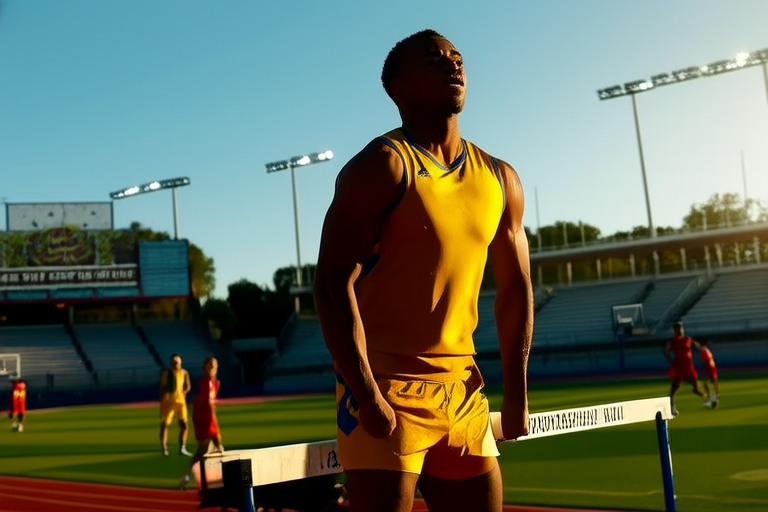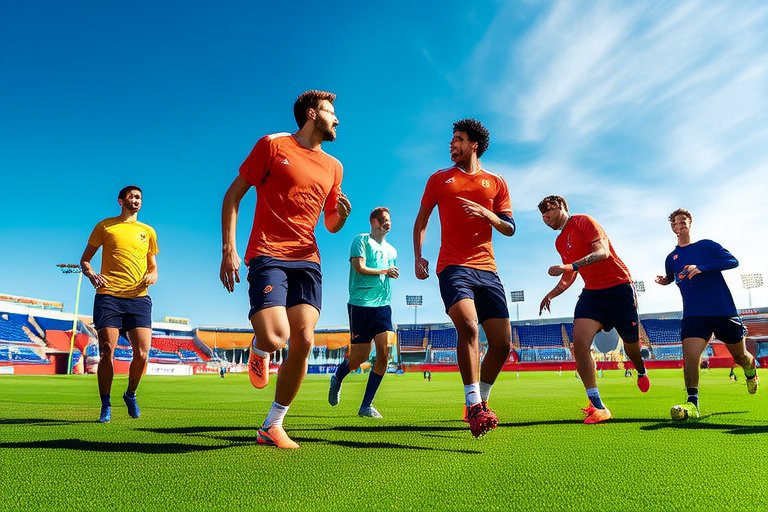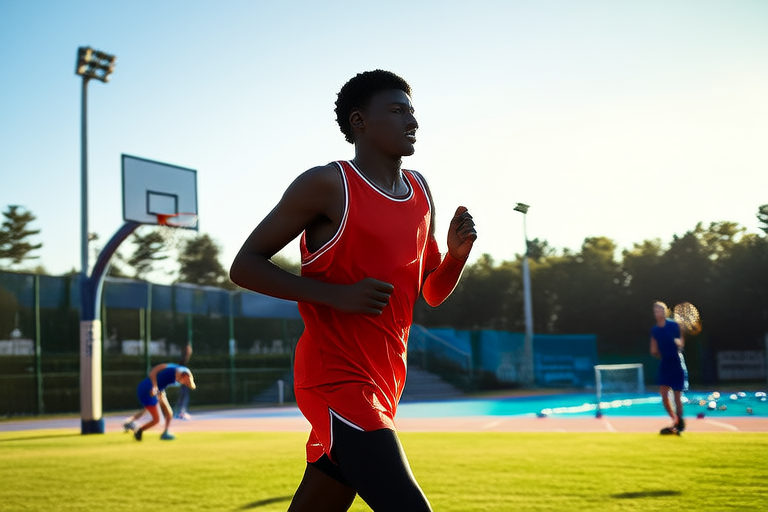The Diverse World of Sports
Sports offer an extensive array of activities that cater to different preferences, skill levels, and physical capabilities. This article explores various categories of sports, including team sports, individual sports, outdoor sports, indoor sports, Olympic sports, non-Olympic sports, contact sports, non-contact sports, seasonal sports, year-round sports, competitive sports, recreational sports, traditional sports, modern sports, and adaptive sports. By understanding these categories, you can gain a comprehensive overview of the breadth and depth of sports activities available globally.
Team Sports
Team sports involve groups of individuals working together towards a common goal. These sports often require coordination, communication, and strategic planning. Popular examples include basketball, soccer (football), and volleyball. In basketball, two teams of five players each try to score points by throwing a ball through a hoop. Soccer is played between two teams of eleven players on a rectangular field, with the objective of scoring goals. Volleyball involves two teams of six players each, aiming to ground a ball on the other team’s court.
Individual Sports
Individual sports focus on personal achievement and development. Participants compete against themselves or others in solo events. Examples include tennis, swimming, and track and field. Tennis is played between two players or four players in doubles, involving hitting a ball over a net into the opponent’s court. Swimming encompasses various strokes, distances, and events, requiring endurance and technique. Track and field includes running, jumping, and throwing events, testing speed, agility, and strength.
Outdoor Sports
Outdoor sports take place in natural environments, often under open skies. They provide opportunities for adventure and connection with nature. Popular outdoor sports include hiking, cycling, and rock climbing. Hiking involves walking long distances on trails, exploring landscapes and wildlife. Cycling combines physical exertion with scenic routes, offering a low-impact cardiovascular workout. Rock climbing challenges climbers to scale vertical surfaces using their hands and feet, developing upper body strength and problem-solving skills.
Indoor Sports
Indoor sports occur within enclosed spaces, providing protection from weather conditions and allowing year-round participation. Examples include badminton, table tennis, and gymnastics. Badminton is played between two or four players, using racquets to hit a shuttlecock over a net. Table tennis, also known as ping pong, involves hitting a lightweight ball back and forth across a table with paddles. Gymnastics showcases athletes’ flexibility, balance, and strength through floor exercises, vaulting, and apparatus routines.
Olympic Sports
Olympic sports are those included in the Summer and Winter Olympic Games, representing the pinnacle of athletic competition. The Olympics feature a wide range of disciplines, from track and field to artistic swimming. Track and field comprises running, jumping, and throwing events, emphasizing speed, power, and precision. Artistic swimming combines synchronized swimming with choreography and music, demanding grace, coordination, and stamina.
Non-Olympic Sports
Non-Olympic sports are not part of the official Olympic program but still attract significant interest and participation worldwide. Examples include skateboarding, parkour, and esports. Skateboarding involves performing tricks and stunts on a skateboard, fostering creativity and balance. Parkour focuses on navigating obstacles efficiently, blending athleticism with urban exploration. Esports encompass competitive video gaming, attracting millions of spectators and participants.
Contact Sports
Contact sports involve physical interaction between players, increasing the risk of injury but also promoting teamwork and resilience. Examples include rugby, boxing, and martial arts. Rugby is a high-intensity game where players carry, pass, and kick a ball, engaging in frequent collisions. Boxing requires fighters to strike each other with gloved fists, developing punching power and defensive techniques. Martial arts encompass various styles, such as karate, judo, and taekwondo, focusing on self-defense, discipline, and mental fortitude.
Non-Contact Sports
Non-contact sports minimize physical interaction, reducing injury risks while still offering thrilling competitions. Examples include golf, archery, and curling. Golf challenges players to hit a small ball into a series of holes using clubs, emphasizing accuracy and strategy. Archery involves shooting arrows at targets, honing aim and concentration. Curling requires teams to slide stones toward a target area, sweeping the ice to control the stone’s path, combining precision and teamwork.
Seasonal Sports
Seasonal sports are tied to specific times of the year, often influenced by climate and daylight hours. Examples include skiing, surfing, and cricket. Skiing takes advantage of winter snow, offering downhill and cross-country variations. Surfing thrives during summer months when ocean waves are most suitable for riding. Cricket is predominantly played during spring and autumn, benefiting from milder temperatures and longer days.
Year-Round Sports
Year-round sports can be practiced throughout the calendar year, regardless of season or weather conditions. Examples include basketball, swimming, and weightlifting. Basketball provides consistent indoor facilities, ensuring continuous play. Swimming offers indoor pools for year-round training and competition. Weightlifting can be performed indoors or outdoors, adapting to various climates and settings.
Competitive Sports
Competitive sports emphasize winning and performance, often involving tournaments and championships. Examples include chess, tennis, and equestrian events. Chess pits two players against each other in a battle of wits and strategy, utilizing a 64-square board and 32 pieces. Tennis features singles and doubles matches, testing players’ technical skills and mental toughness. Equestrian events showcase horse and rider partnerships, competing in dressage, show jumping, and eventing.
Recreational Sports
Recreational sports prioritize enjoyment and leisure, often with less emphasis on competition. Examples include hiking, kayaking, and dance classes. Hiking offers scenic routes and opportunities for relaxation. Kayaking provides a serene way to explore waterways, promoting fitness and balance. Dance classes encourage movement, expression, and social interaction, catering to various genres like ballet, salsa, and hip-hop.
Traditional Sports
Traditional sports have historical roots and cultural significance, often passed down through generations. Examples include sumo wrestling, lacrosse, and bullfighting. Sumo wrestling originated in Japan, featuring two wrestlers attempting to force each other out of a circular ring or onto the ground. Lacrosse was developed by Native Americans, involving teams passing and catching a ball with sticks. Bullfighting has deep-rooted traditions in Spain and Portugal, showcasing matadors’ bravery and skill.
Modern Sports
Modern sports incorporate technological advancements and innovative concepts, reflecting contemporary trends and interests. Examples include mixed martial arts, triathlon, and esports. Mixed martial arts combine various fighting disciplines, such as striking, grappling, and submission holds, creating a versatile combat sport. Triathlon integrates swimming, cycling, and running, testing athletes’ endurance and versatility. Esports leverage digital platforms and virtual environments, fostering global communities and competitions.
Adaptive Sports
Adaptive sports accommodate individuals with disabilities, promoting inclusivity and accessibility. Examples include wheelchair basketball, sitting volleyball, and para-alpine skiing. Wheelchair basketball follows standard basketball rules, adapted for players in wheelchairs. Sitting volleyball features shorter nets and smaller courts, allowing players to remain seated throughout the match. Para-alpine skiing enables athletes with physical impairments to participate in downhill and slalom events, utilizing specialized equipment and techniques.
In conclusion, the world of sports is incredibly diverse, offering numerous options for people of all ages, abilities, and interests. Whether you prefer team or individual activities, outdoor or indoor settings, competitive or recreational pursuits, traditional or modern disciplines, there is a sport suited for everyone. Embracing this variety can lead to improved physical health, mental well-being, and social connections.










